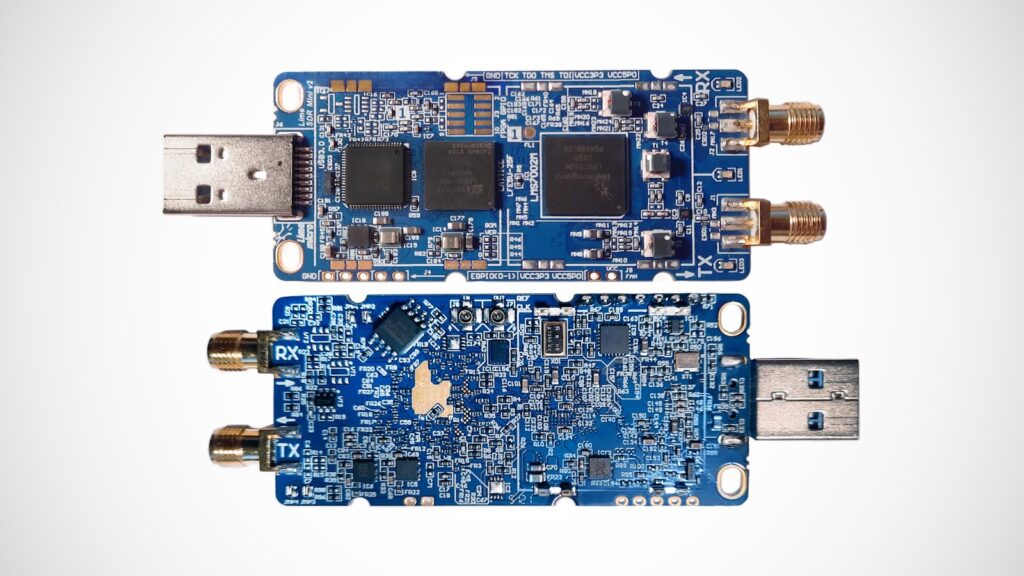LimeSDR 2.0 Mini Now Crowdfunding, Standard LimeSDR Discontinued
Back in March we posted about the LimeSDR Mini 1.0 becoming end of life due to component shortages, and a slightly upgraded LimeSDR Mini 2.0 was being planned. The LimeSDR Mini 2.0 has just been released for preorder over on the CrowdSupply crowdfunding website with a price of US$399 + shipping. The first 1000 units are expected to be ready within 14-weeks, with subsequent batches out at 32-weeks.
The new pricing is at quite a premium over the original LimeSDR Mini which released in 2017 for US$139, and the standard LimeSDR which released in 2016 for US$249. However we of course must to take into account the extreme inflation of electronic parts pricing that has occurred over the past few years.
Lime Micro have also noted that the standard LimeSDR has also now been discontinued due to the same supply shortages. The standard LimeSDR had 2x2 RX/TX channels and was capable of a bandwidth of up to 61.44 MHz. In comparison, both versions of the LimeSDR Mini are a 1x1 channel product with 40 MHz of bandwidth.
The LimeSDR Mini 2.0 is almost identical to the LimeSDR Mini 1.0, both still making use of the LMS7002 RF transceiver as the main chip and using the same overall design. The only change is an upgrade to the FPGA, which replaces the Intel MAX 10 16k logic gate FPGA with a significantly more capable Lattice ECP5 44k logic gate FPGA.
Given the new pricing, people on the lookout for a new hacker/research/experimenter SDR in this price range might want to consider this brief comparison to find the best suited SDR for your needs:
- LimeSDR Mini 2.0 - US$399
1x1 channels, 40 MHz bandwidth, 10 MHz to 3.5 GHz, 12-bits.
- HackRF One - US$330 (~$150 clones)
1x1 channels (half-duplex), 20 MHz bandwidth, 1 MHz to 6 GHz, 8-bits.
- PlutoSDR - US$229.18
1x1 channels, 20 MHz bandwidth, 325 MHz to 3.8 GHz, 12-bits.
- bladeRF 2.0 Micro xA4 - US$540
2x2 channels, 61.44 MHz bandwidth, 47 MHz to 6 GHz. 12-bits.

I will recommend to switch to other product. They should deliver the product in oct22, but they updated it: jan23, main reason is blame of delivery of components. I have plan to buy lime in sept21. Till April I get not update, when they will be able to start selling at all. They release v2, but as well they are not able deliver on time. So after waiting more then 1year to get one, I would recommend you to buy elsewhere, depends on your needs. Pluto SDR I get in EU in 5 days 🙂 and HackRF takes about 1month form China to EU. Hard to compete with delivery lines for LimeSDR, when their products flight in the wind and are more wishes as real.
I have 2 of them. And it’s for sale now. If you want, you can contact by e-mail.
[email protected]
Quite tragic decision. 61,44 MHz bandwidth was fine for some satellite usage. 40 MHz is not. Price jump is unacceptable, even taking components shortage into account. Better alternatives are available in not so higher price, like mentioned BladeRF 2.0. Wrong turn, extremal degradation in device capabilities, extremal price increase.
lol @ pluto sdr 20Mhz bw. No more than 5MHz over the provided USB2. But it can be expanded to 70MHz to 6GHz with un-guaranteed results.
That is true, however if you add $140 to the price of new LimeSDR mini you get bladeRF 2.0 micro xA4 that uses AD9361 which has range 47MHz to 6GHz, 61.44MHz sampling rate, and 2×2 MIMO. So unless you are bound to LimeSDR ecosystem new Mini is not financially sensible.
It performs a bit better If you install a recent version of firmware. It still maxes out at 7 – 8 MS/s, which is typical for a USB2-based SDR units. I think maybe it is possible to go beyond that if a support for reduced precision (like 8 bits/sample) is added, but I am not bothered to try that (by myself, at least).
But yes, I think 20 MS/s is still an unlikely figure.
You can get PlutoSDR at a bit lower price than what is stated in the post, if you look around a bit. The price has been fluctuating recently, for obvious reasons.
Who funded this thing!?
Have to admit….something is not adding up.$US400 = $AUS550.
I have already added the components + assembly + profit and it is not coming *anywhere* near that cost.
And at that price It makes more sense to buy an SDR transceiver (e.g. G90) for a few extra bucks…..
Can’t see this getting off the ground unless it has some very clear usable improvements.
G90 is only suitable for some specific use cases, so I think that is not the best example in this case (you are probably not the main target audience if all you need is a HF transceiver).
I do agree that the new price tag is a bit too high, though.
Wow, $400 USD is quite a big jump for something that originally sold at $99 (limited) then $139 (and now $159) with no real changes? (Unless people really did need more gates?).
Yeah, it also feels like bullshit for me, especially since they’re also ditching the more powerful fullsize-model. Looks like they are out of drug money so theyre gonna sell overpriced shit lol, who needs fucking gates? built in preselection, PAs and fixed thermals would be better (… and it would also make this price “increase” more justifiable)